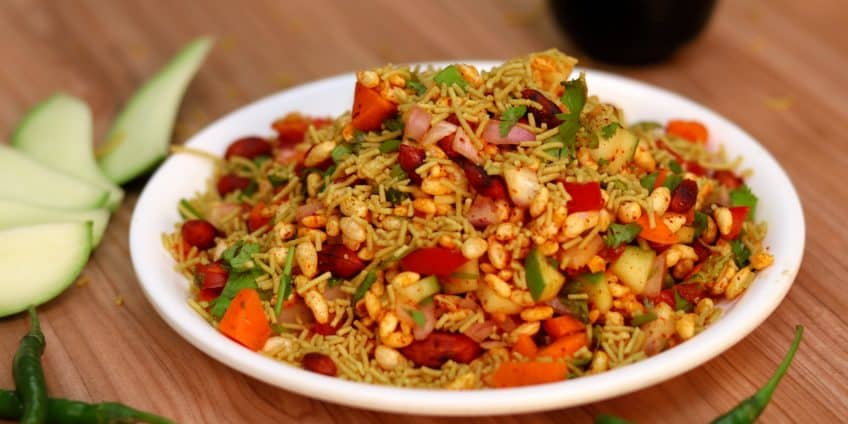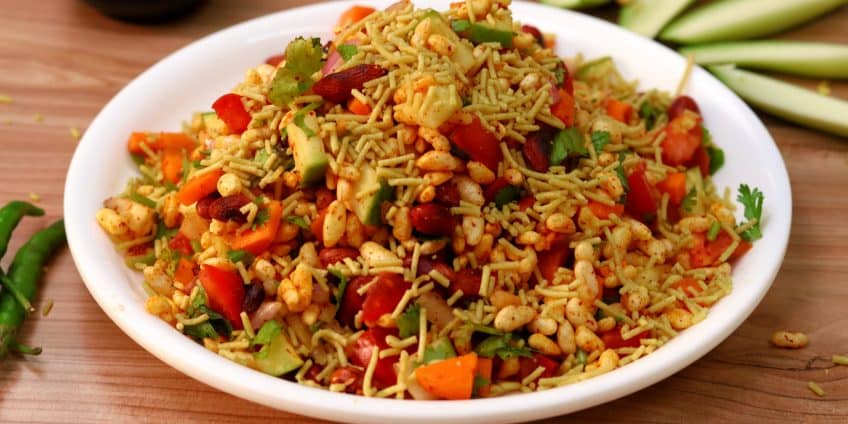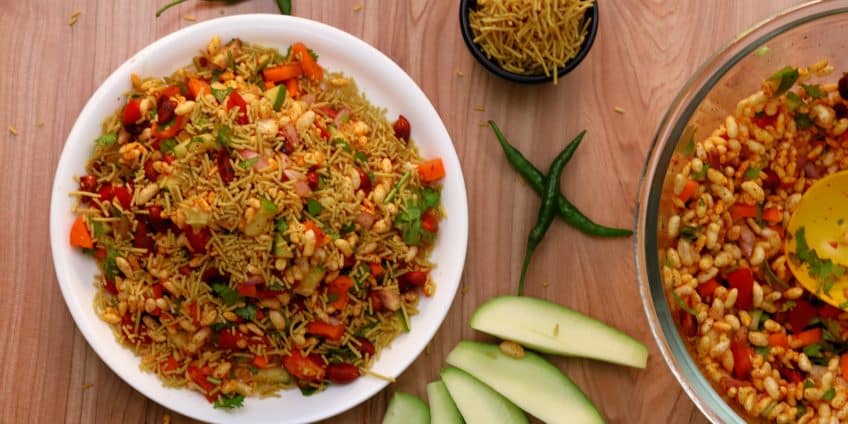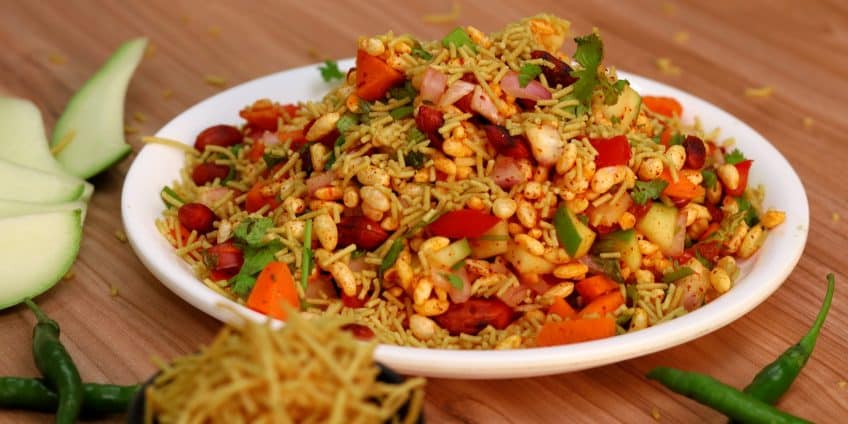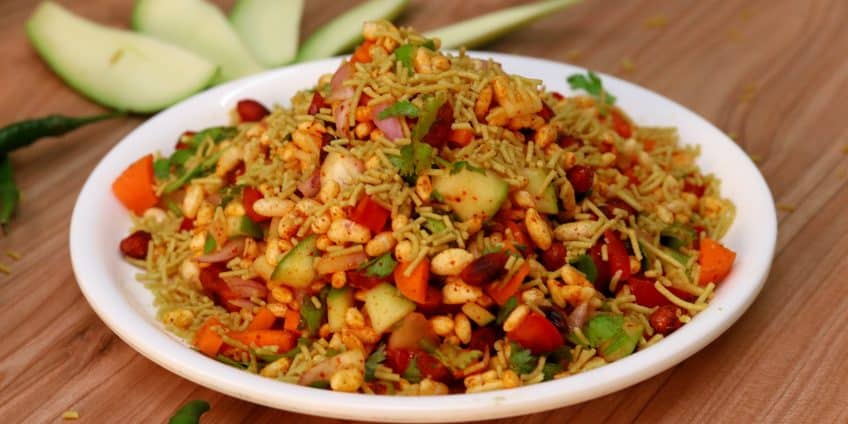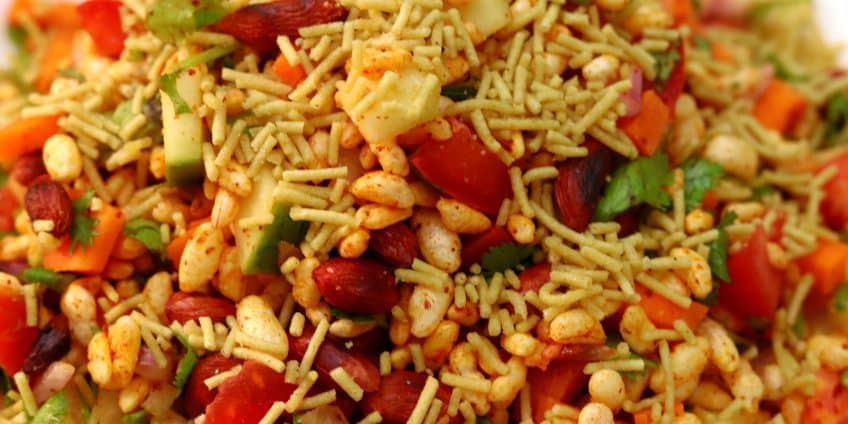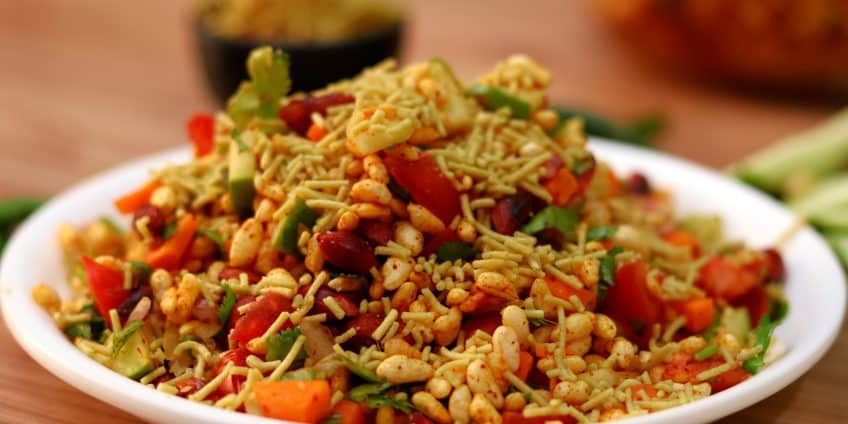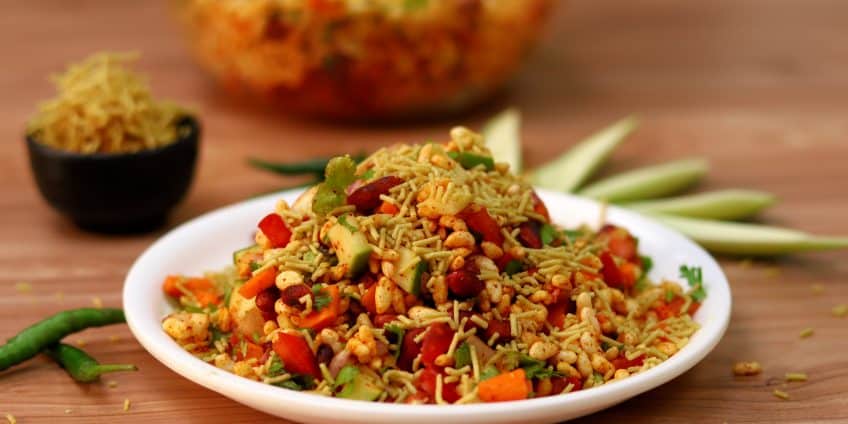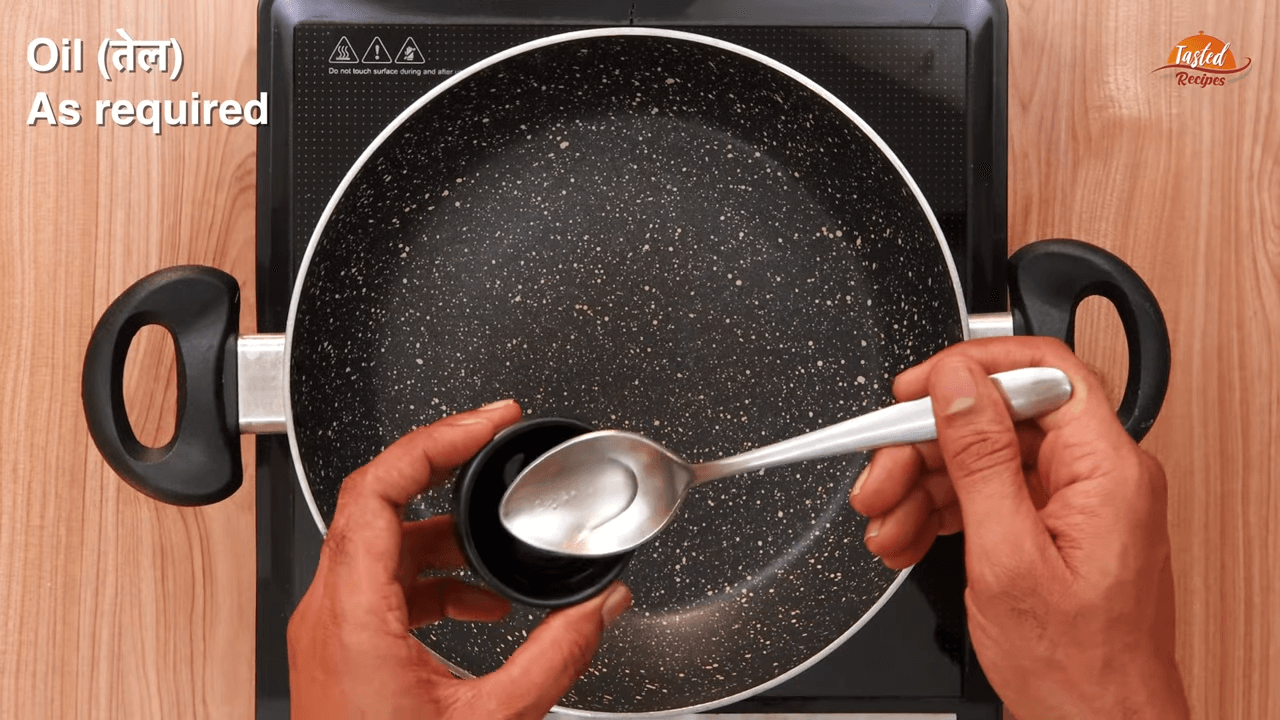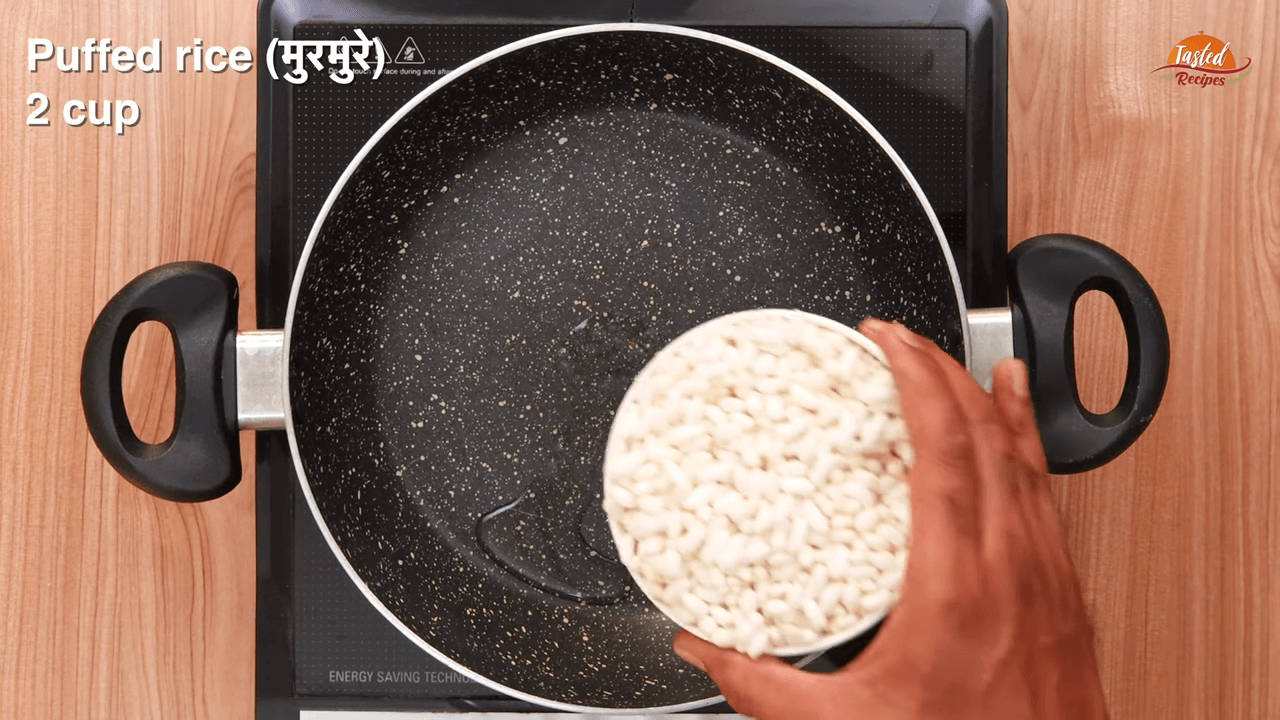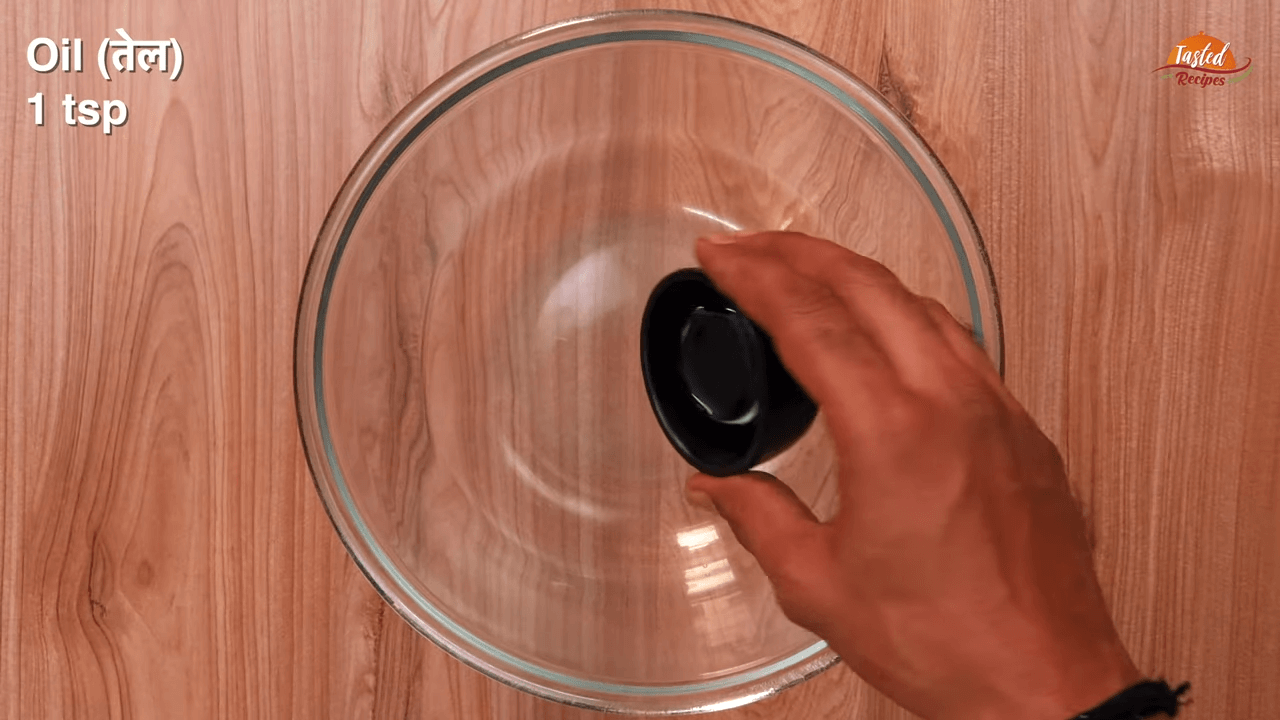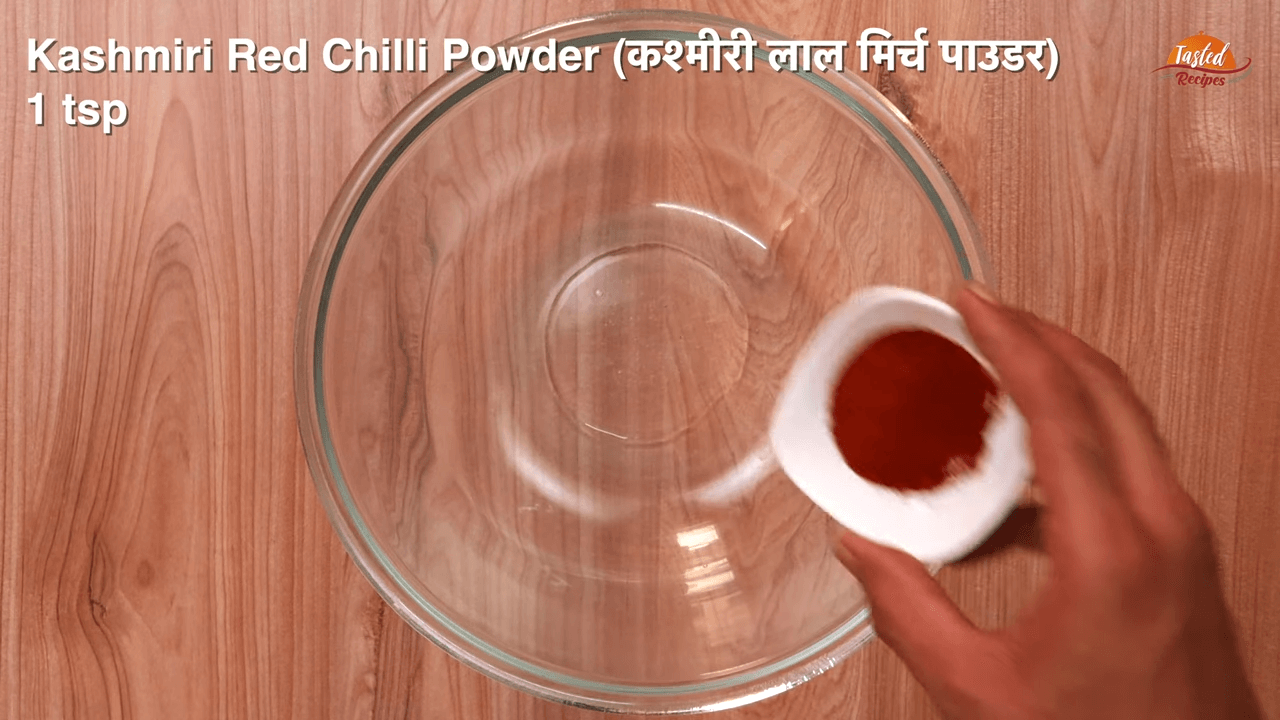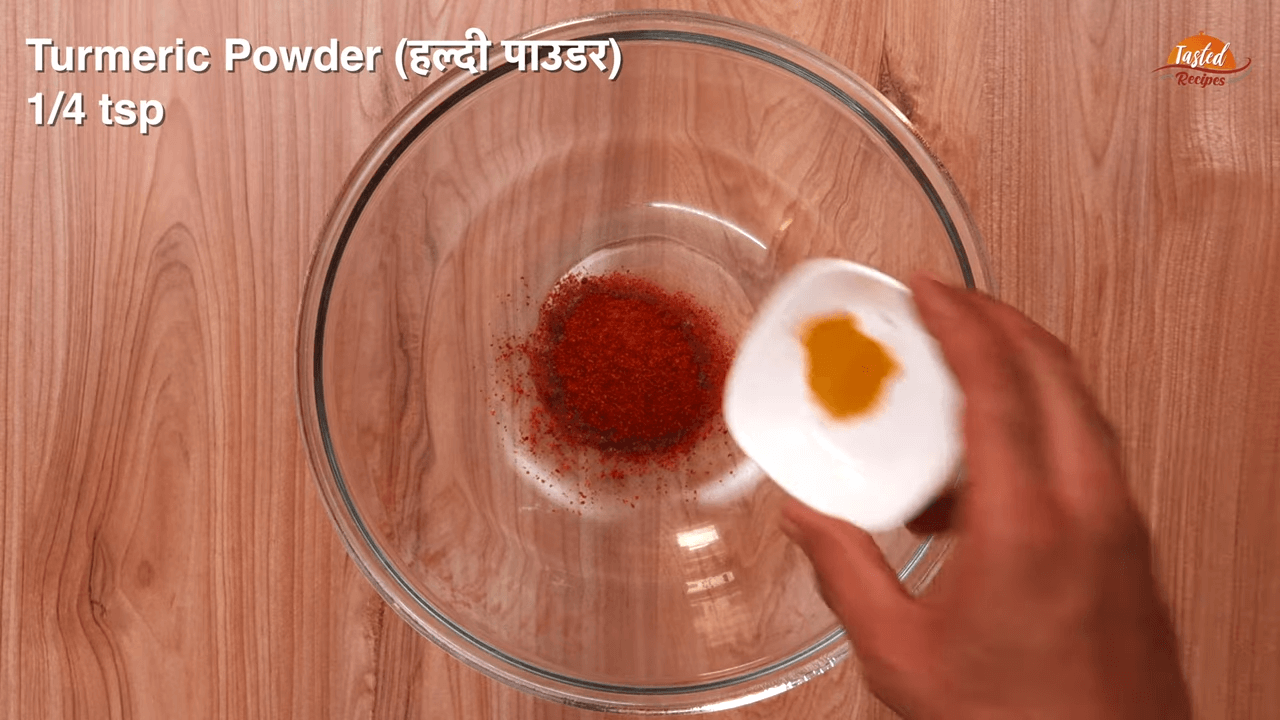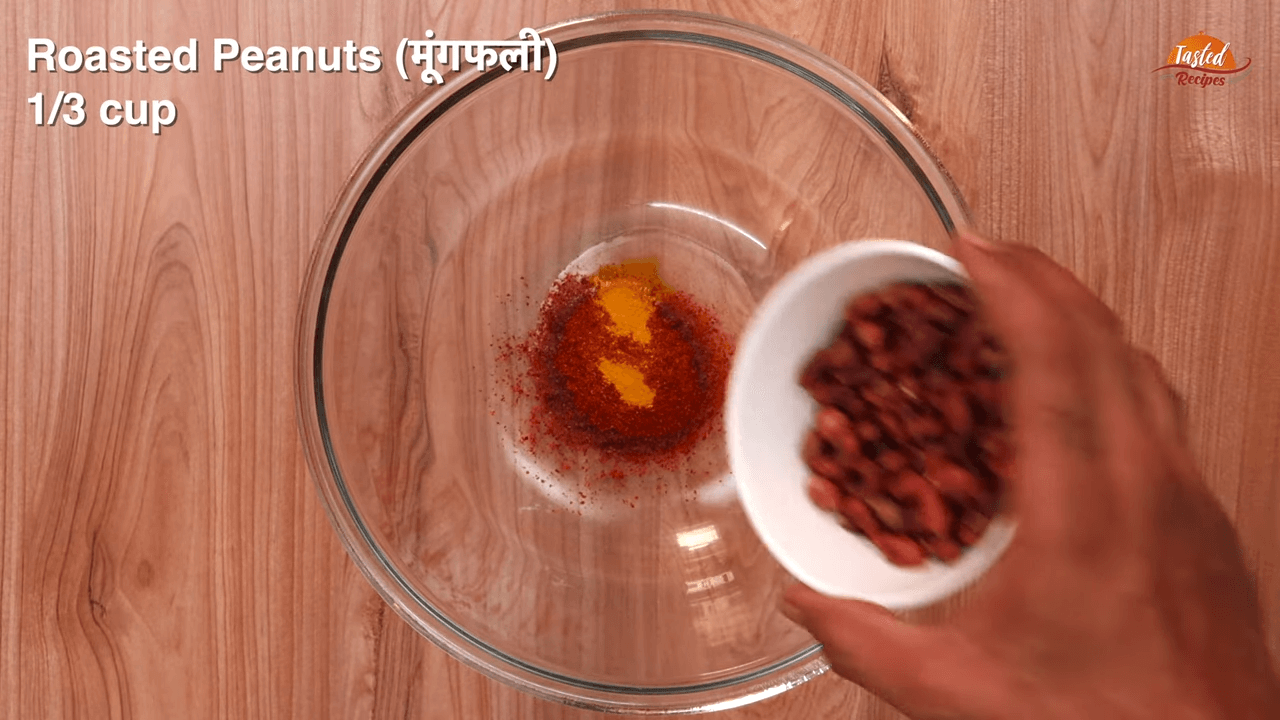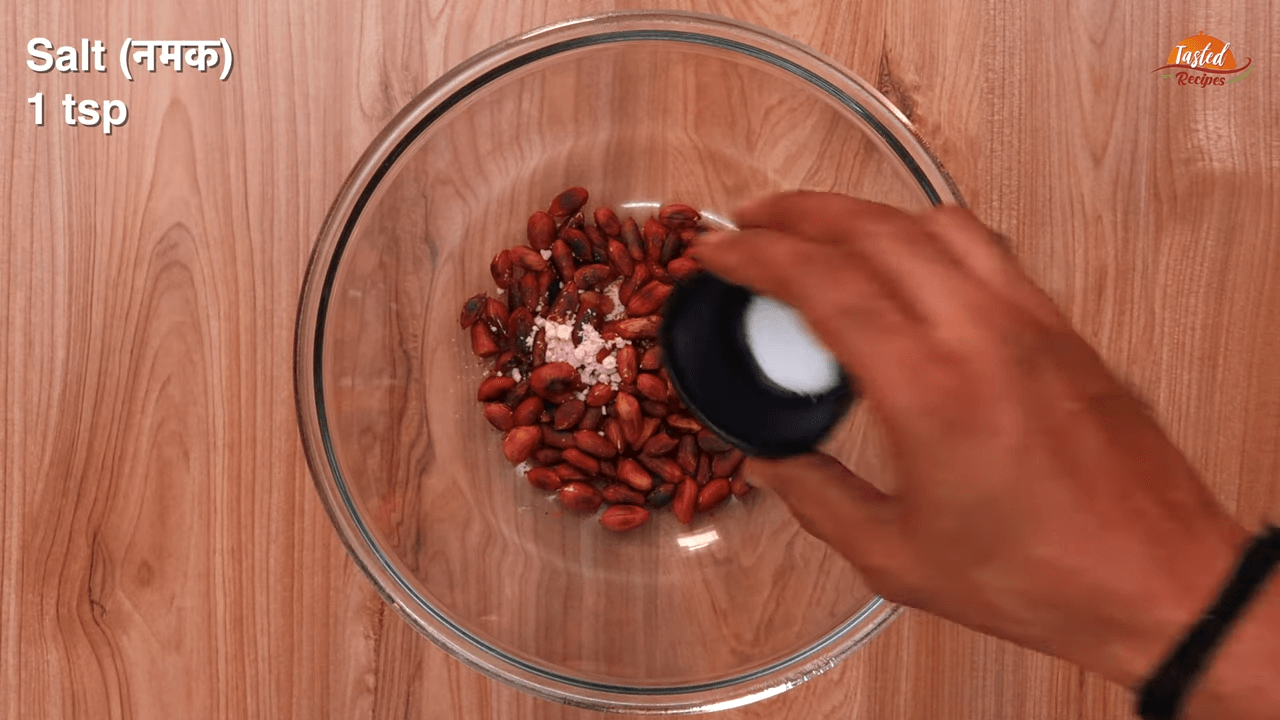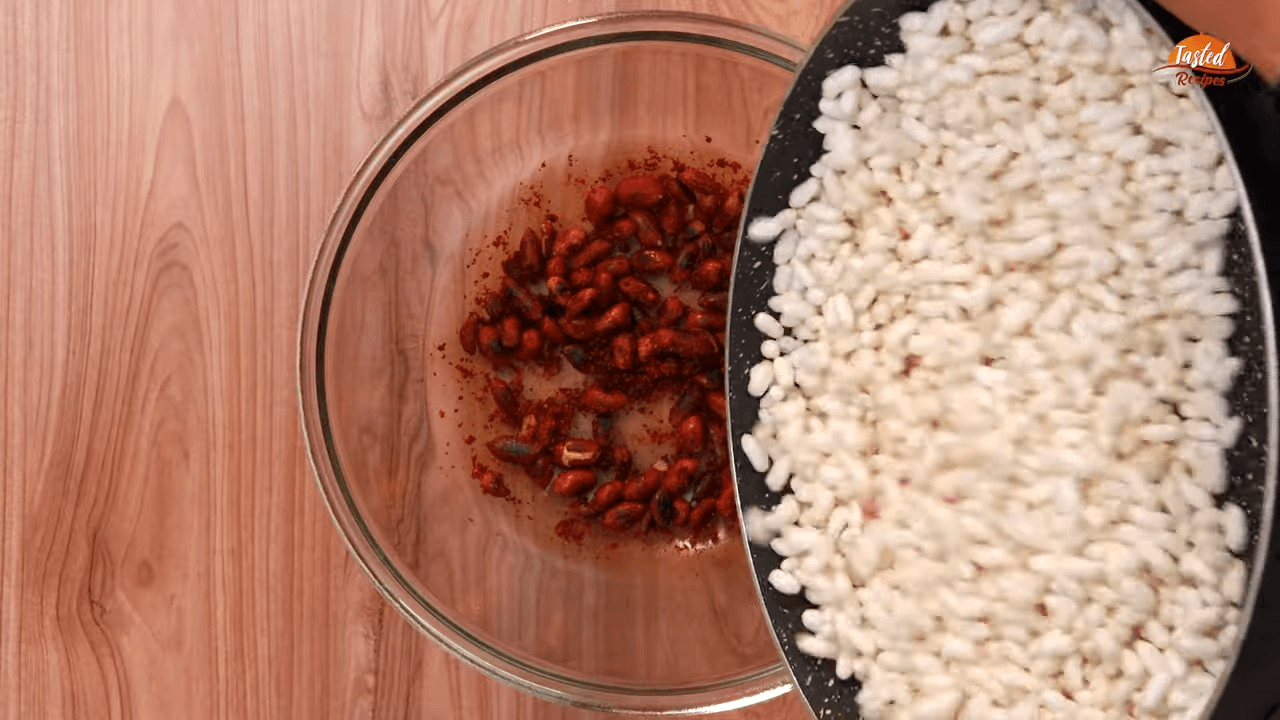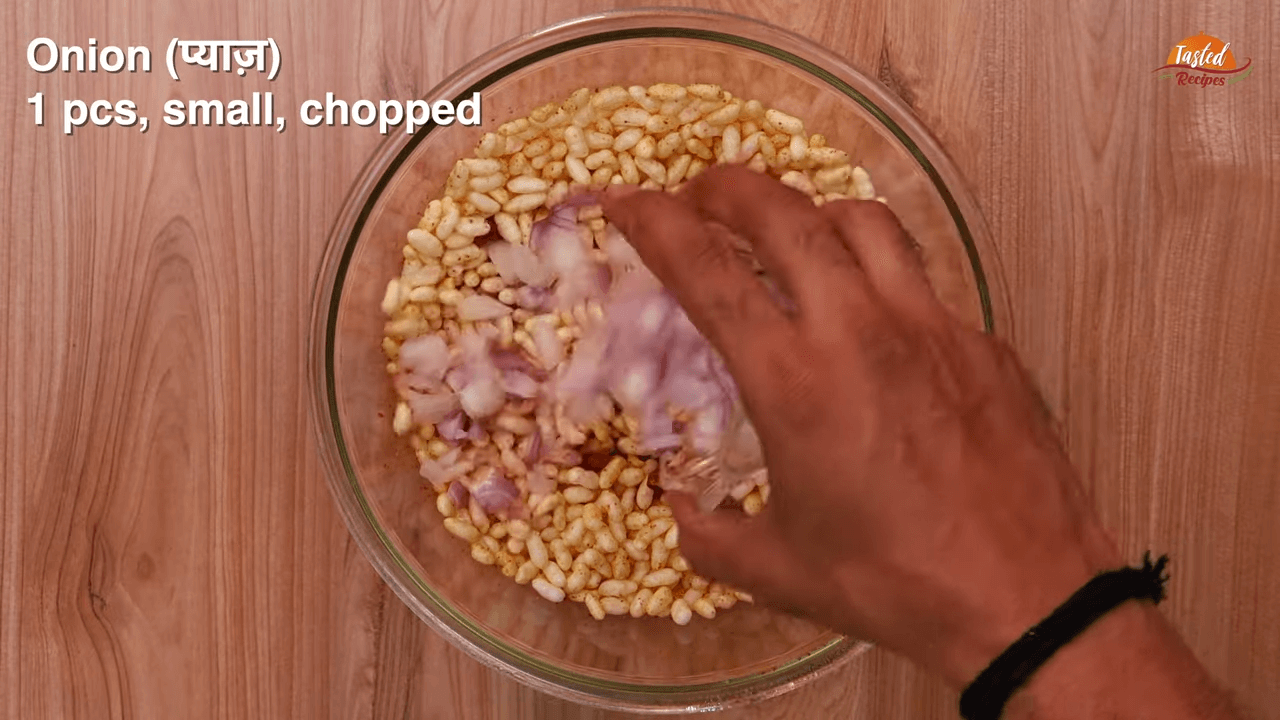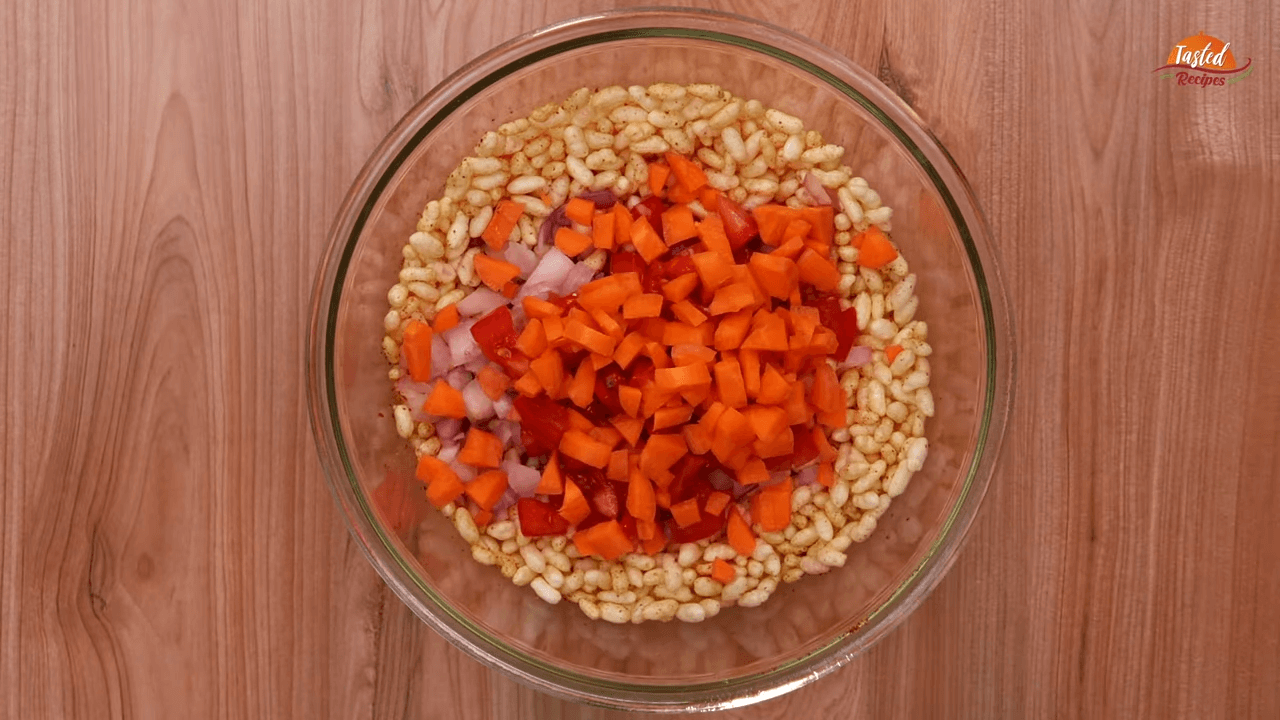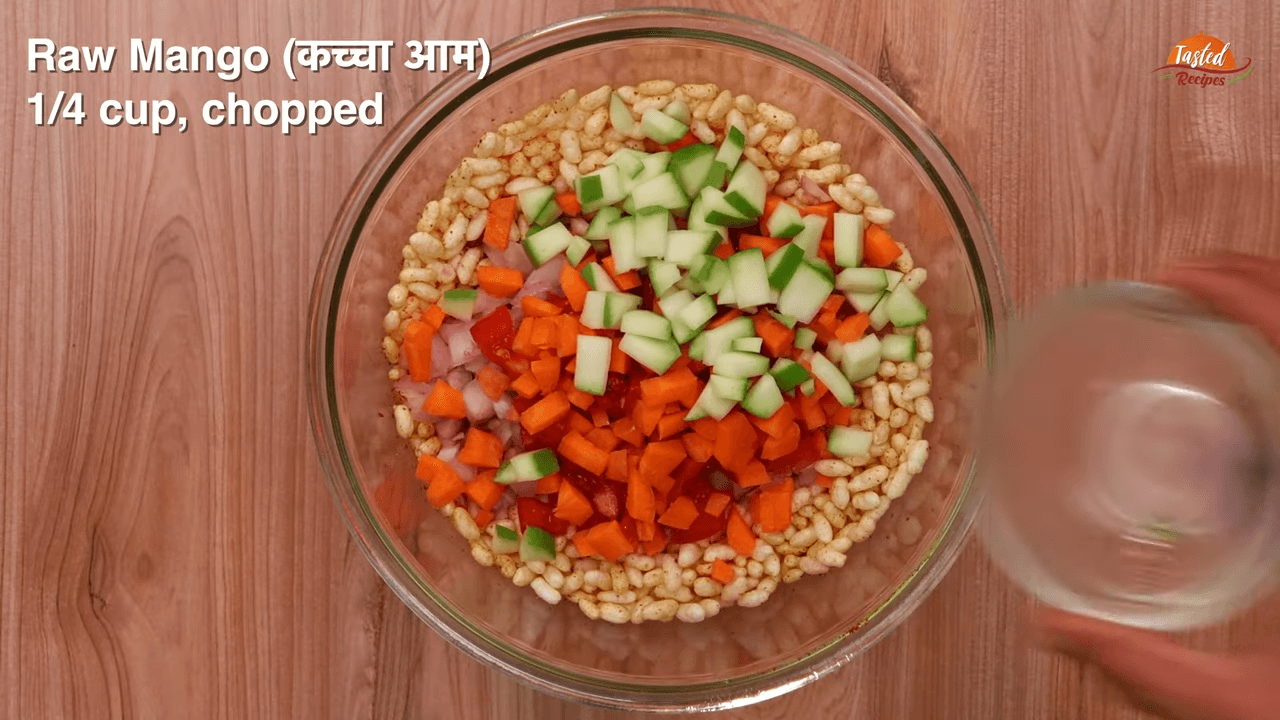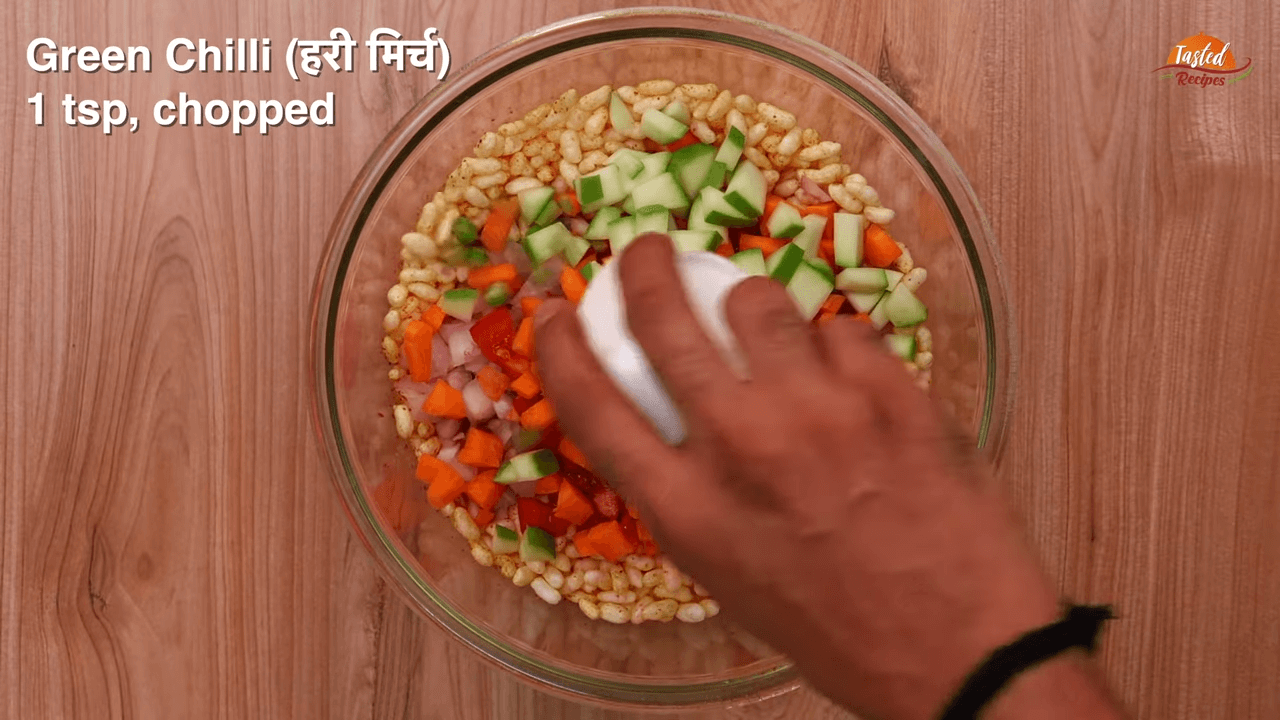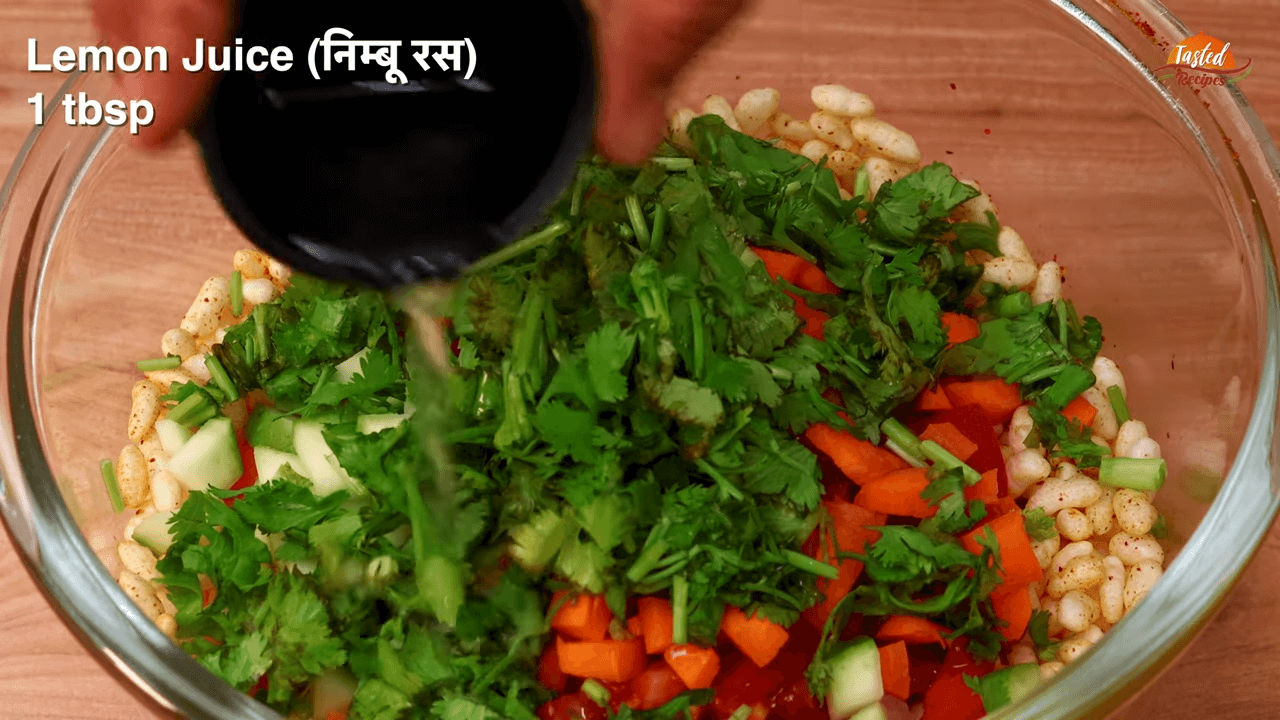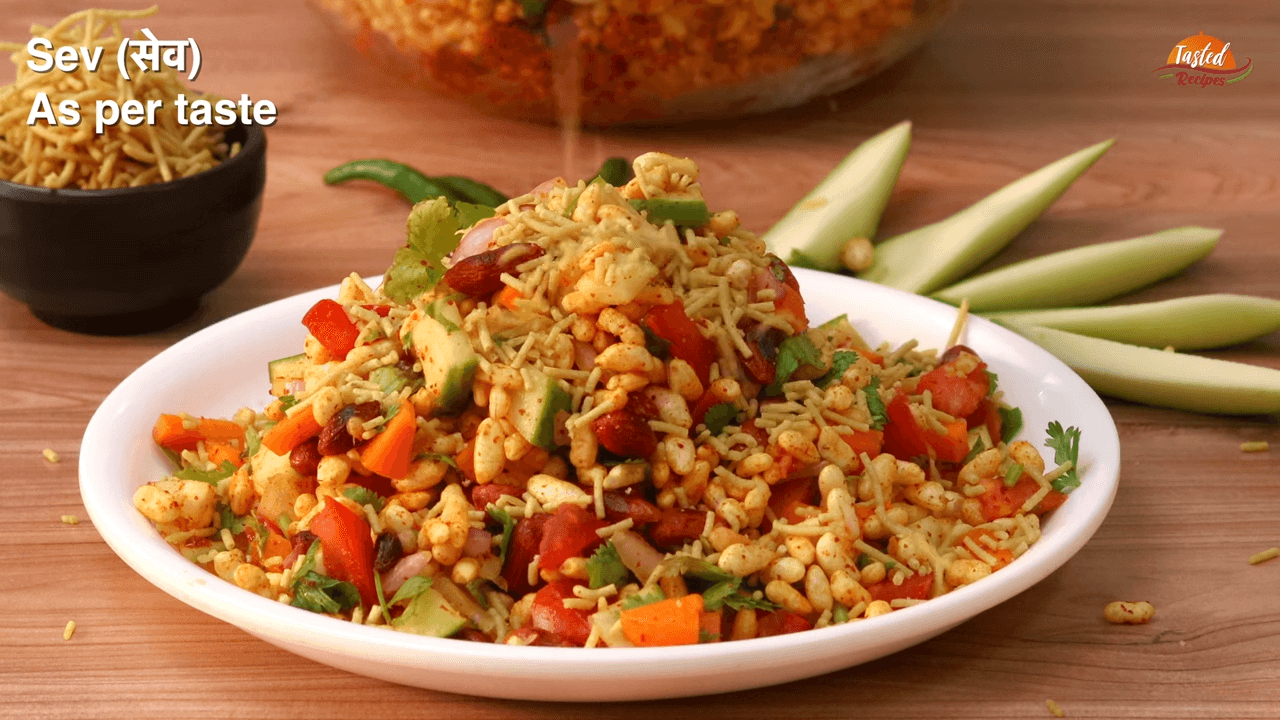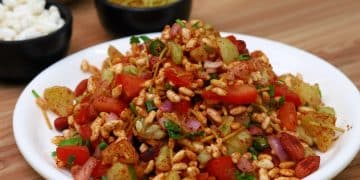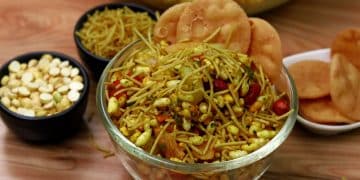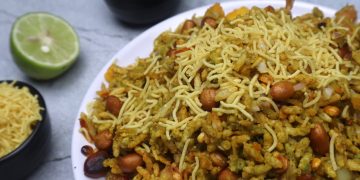Churumuri is famous street food from south India. Popular variants are Bhelpuri (Gujarat and Maharashtra) and Jhalmuri (West Bengal and Orissa). Churumuri is more famous in south India, Karnataka to be precise. You can make this dish with simple ingredients in very little time.
In Karnataka, there are more versions and names as regions differ. In northern Karnataka’s Hubbali and Dharwad districts, People know it as Girmit. Whereas in Mangaluru, people call it Masala mandakki. And in central Karnataka, people call it Davangere mandakki. Mandakki is the regional name for puffed rice in Karnataka.
Bhel and its variants are so famous that people love it in the Indian subcontinent. People love it from Delhi to southern India and Gujarat to Northeastern India. The dish is so famous that it goes international with Chatpate in Nepal and Jhalmuri in Bangladesh.
Regional variations of Churumuri
- Girmit: People serve Mirchi bajji and gojju with Girmit. Gojju is gravy made by simmering tamarind water with chopped tomatoes and jaggery, and Mirchi bajji is Chilli fritters. If you are a fan of spicy food, then you will love Girmit.
- Masala mandakki: In masala mandakki, people use the same ingredients as Churmuri. There are some additions to it, such as spicy masala peanuts and corn flakes. This variant is famous in south Karnataka.
- Davangere mandakki: Also popular as Nargis mandakki in central Karnataka. Apart from familiar ingredients such as puffed rice and veggies, some additional ingredients like crushed garlic and roasted gram powder are also used. Chaat is always free to use masala and ingredients, so some even prefer sambar powder.
If you want to know more about versions and variations of Bhel, then check out Cheese Bhel, and Bombay Bhel.
Difference between Churumuri and Jhalmuri
Jhalmuri and churumuri are two dishes that taste similar but are from different regions of India.
Jhalmuri is famous in West Bengal, and Churumuri is famous in Karnataka. Though both these dishes have plenty of common ingredients, some aspects and ingredients differentiate between Churumuri and Jhalmuri.
Let’s take a look at what ingredients set these two dishes apart.
Generally, in Churumuri, the ingredient used for the tangy and sour taste is lemon juice. While in Jhalmuri we have used amchur powder as the primary source of tanginess. Raw mango is also used in Churmuri.
Churmuri has an extra ingredient that Jhalmuri does not have: a carrot. Carrot is a rarely used ingredient in chaat dishes, and churumuri uses the taste of carrot perfectly! Jhalmuri has cucumber, and though it is a common ingredient in chaat, it defers jhalmuri and churumuri.
Another difference is masalas in both dishes. While Churumuri has turmeric powder to provide the yellowness to the puffed rice, Jhalmuri has black pepper powder and garam masala.
And the final ingredient that sets these dishes apart is boiled potatoes. Jhal muri include boiled potatoes, whereas they are absent in Churumuri.
Some tips
- Use finely chopped vegetables. It will give a very smooth texture to the dish.
- Chutneys are absent in Churumuri, But I think you can use them if you wish. Though for an authentic taste, I would suggest not to use chutneys.
- For a more authentic taste, you can use coconut oil, or you can also use ghee.
- Different ways of serving can give a different taste. You can serve it in a paper cone for street taste or a copper bowl/dish for proper south Indian taste.
